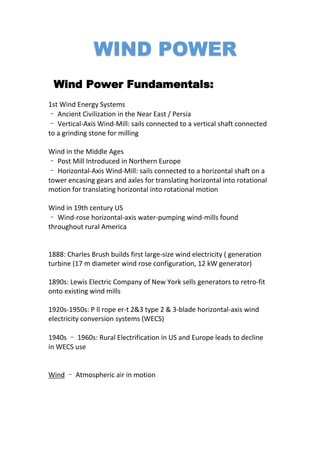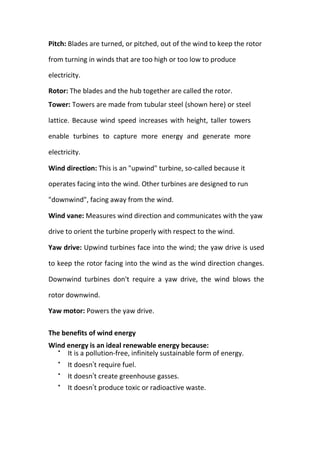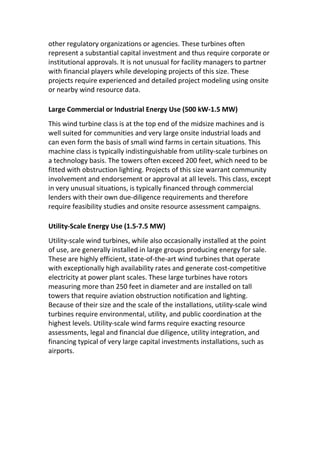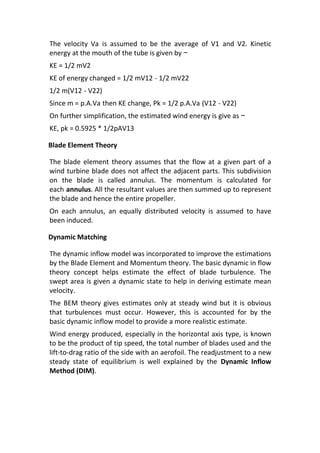This document provides an overview of wind power fundamentals and wind turbine technology. It discusses the history of wind power from ancient civilizations to modern utility-scale wind farms. It describes the basic components and operation of horizontal and vertical axis wind turbines. It also outlines the benefits of wind energy such as being renewable and pollution-free, while noting challenges like intermittent power source and potential environmental impacts.














































